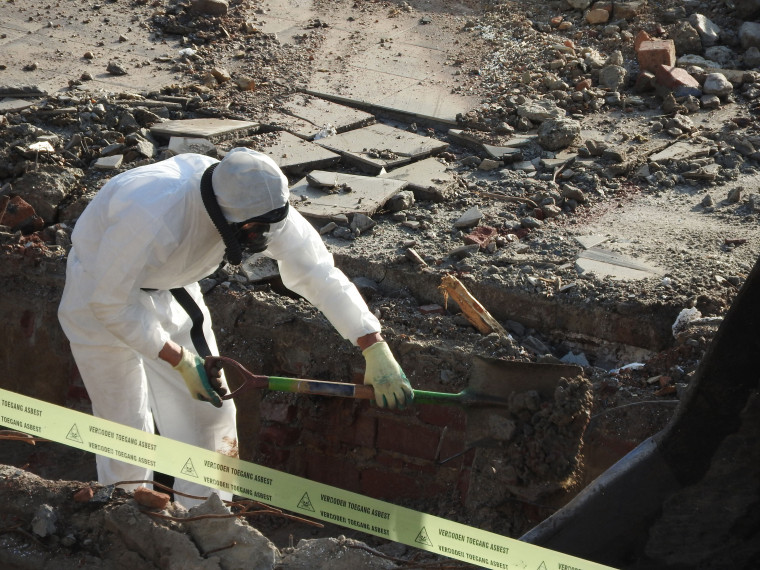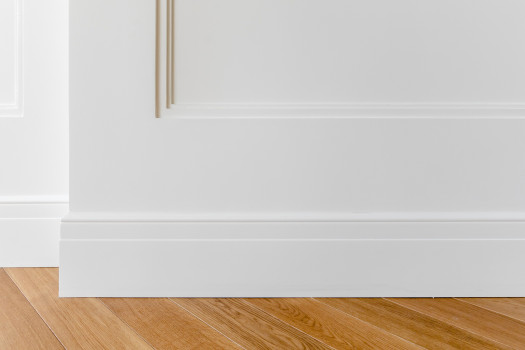A Toxic Free Future: 6 Common Toxins to Avoid When Selecting Construction Materials




Toxic chemical substances lurking in our homes, workplaces and environment. It sounds like the stuff of nightmares, but it is our current reality. The known global burden of disease due to chemicals is considerable. Deaths due to exposure to hazardous chemicals worldwide rose 29 per cent in 2019 from what they were in 2016, according to latest estimates by the World Health Organization (WHO).
There is increasing concern and awareness of the impact of toxic building materials on our health and the environment. Alarmingly, many construction materials contain toxic substances from flooring to furniture, carpeting, upholstery, adhesives and finishes. Careful analysis of construction materials should be instilled in the project’s design phase to protect construction workers, inhabitants and the environment.
Here are six common toxins lurking in construction materials to look out for and avoid in your projects:
1. Formaldehyde
Formaldehyde is a Volatile Organic Compound (VOC) involved in the process of making many building products including presses-wood products such as plywood, particleboard, laminates, composite countertops, insulation, glues and adhesives. It is also in many household products including furniture and upholstery.
Formaldehyde is a toxic gas and exposure to this toxin can cause negative short and long term health effects including respiratory problems and cancer. The International Agency for Research on Cancer (IARC) classifies formaldehyde as a human carcinogen.
Precautionary steps:
• Before specifying pressed-wood products, including building materials, cabinetry, and furniture, you should ask about the formaldehyde content of these products.
• Look for items labelled low or no VOC or made without formaldehyde.
• Formaldehyde levels in homes can also be reduced by ensuring adequate ventilation, moderate temperatures, and reduced humidity levels through the use of air conditioners and dehumidifiers.
2. Phthalates
Phthalates are a group of industrial chemicals used to make plastics like polyvinyl chloride (PVC) more flexible or resilient. Phthalates are found in PVC building products, including vinyl flooring, upholstery, wall coverings, roof membranes and sealants. Phthalates can also be found in toys, food packaging, hoses, shower curtains, adhesives, detergents and shampoo.
Exposure to phthalates is linked to a range of serious health issues including disruption to the human hormone system, reduced testosterone levels, neurodevelopmental effects in children, liver and kidney toxicity and cancer.
Precautionary steps:
• Consider alternatives to vinyl flooring, such as linoleum, ceramic tile or cork.
• Specify copper, cast iron, or concrete pipes instead of PVC.
• Avoid Vinyl windows and doors and opt for wood instead.
• Look for wallpaper made from natural fibers.
3. Cadmium
Cadmium is a toxic heavy metal. Cadmium is used as a sacrificial-protection coating for iron and steel. Other uses include alloys, coatings (electroplating), solar cells, plastic stabilisers, and pigments. Cadmium can also be found in cookware, home electronics, and batteries.
Cadmium is an extremely toxic metal and exposure can lead to many serious health effects. Exposure to cadmium over a short period of time is initially like the flu with chills, fever and muscle pain, then later can cause lung damage, shortness of breath, chest pain and cough, which may lead to death in severe cases. Long term exposure to cadmium can lead to kidney disease and cause bones to become weaker.
Precautionary steps:
• Specify cadmium-free paints and coatings
4. Copper Chromium Arsenic (CCA)
CCA is a wood preservative pesticide containing chromium, copper, and arsenic. It is used to extend the service life of timber products and makes the timber highly resistant to rot, fungi and pests. Nowadays, CCA is a restricted chemical product in most countries, however, large quantities of CCA-treated timber are still in use in framings, landscaping, building poles, jetty piles, and fencing structures around the world.
Wood products treated with CCA were found to be toxic to the environment and human health, due to leaching and accumulation of these metals from the wood into the environment. Toxic effects of CCA can come from any of the chemical constituents, but most of the focus has been on arsenic. Arsenic poisoning produces peripheral nervous system disturbances and degeneration, damages mucus membranes, and suppresses the immune system. The International Agency for Research on Cancer (IARC) has classified arsenic and arsenic compounds as carcinogenic to humans.
Precautionary steps:
• Specify less toxic alternatives such as naturally pest and rot resistant wood (cedar or redwood), composite lumber, recycled steel, recycled plastic marine pilings, fiberglass, and concrete.
• Read the labels - CCA treated timber in Australia must be marked with the words ‘Treated with copper chrome arsenate’ either in the form of individual labels fixed to the ends of wood, or as brands along its length.
5. Lead
Lead is a toxic heavy metal that can be found in paint, pipes, fixtures, roofing and other construction materials.
Lead is poisonous and absorbable into the blood, slowly accumulating in bones and soft tissues eventually destroying the nervous system. Exposure to lead causes blood disorders, brain disorders, blindness, reproductive health complications and damage to the kidneys.
Precautionary steps:
• Avoid lead-based paints
• Specify lead-free fixtures and fittings
6. Silica
Silica is a natural mineral found in construction materials such as concrete, bricks, tiles and engineered stone. Short and long term exposure to Silica dust during construction and demolition leads to serious health conditions including lung infections and silicosis. Silicosis is an irreversible, incurable and progressive lung disease that can lead to disability and death.
Precautionary steps:
• Check the safety data sheet (SDS) or information from the manufacturer or supplier to see if the material contains silica.
• Specify safer alternatives such as natural stone, laminate, hempcrete, and clay brick.
When you are choosing materials for your construction project, always consider the potential health risks. Choose safe alternatives to toxic materials whenever possible. Your health and the environment will thank you for it.




 Indonesia
Indonesia
 New Zealand
New Zealand
 Philippines
Philippines
 Hongkong
Hongkong
 Singapore
Singapore
 Malaysia
Malaysia







